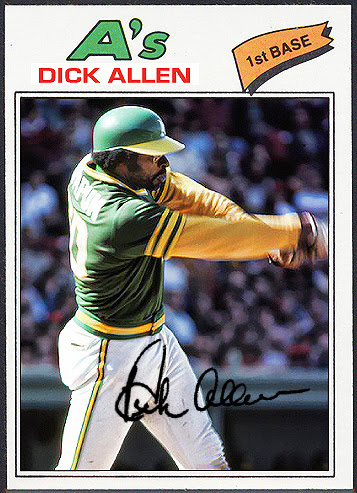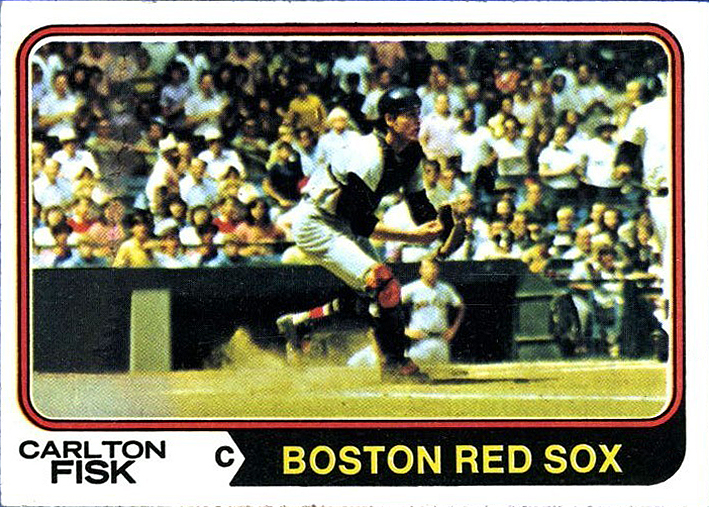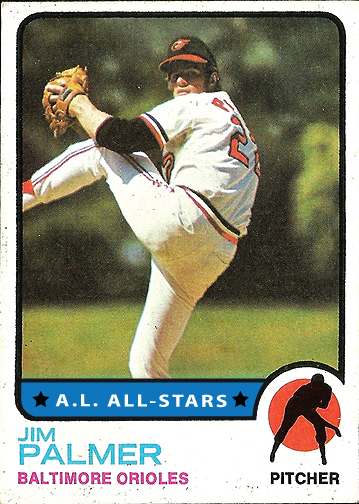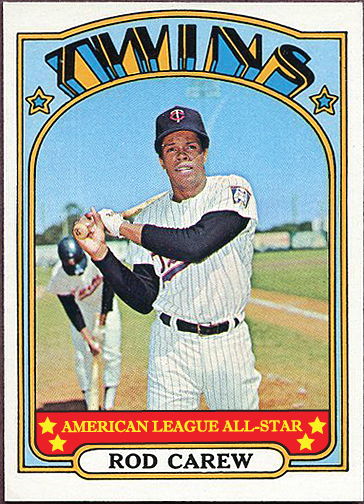When Thurman Munson died in 1979, I was ten years old and was
crushed by what happened to my favorite player. As a kid that young I
remember this was the first time I dealt with a "famous" person that I
really followed dying suddenly.
The following year when the "new" cards were about to come out, a
bunch of us were wondering what the Munson card would look like. In our young naive minds we seriously were expecting Topps to have some sort of "last card" for him, and
it took a while (and quite a few packs) before
we realized that Munson was actually not included in the set.
Talk about being crushed again! We were pissed off that
Topps didn't make a card for the "Captain", and we couldn't get an
answer as to why.
To be honest, I STILL don't have an answer. But I kind of get the
feeling a big part of it may have been what one guy said to me years
ago, "Cards are mainly for kids. Why throw death into it all?" Simple
enough right? And I'll settle for that.
However, over the years I took an interest in players that died an
untimely death, and paid a little extra special attention to those
"last" cards. Ever since I came across the Ken Hubbs "memorial" card
from the 1964 set, I always thought back to Munson,
and some other players who died young, and wondered what memorial cards
of them would have looked like.
Sadly, the 1970's had quite a few baseball players that died young
and I wanted to do a "In Memoriam" thread on this blog, having that
"last card" with a call-out in memory of the player as a fitting close
to their careers. I don't want to have a unique
design as the Hubbs card has, but a simple stripe or bar with the words
"In Memoriam" in black and white on the standard card design of that
year.
These players fall into two groups: the first are those who died
before their last card was actually issued (think Don Wilson '75, Gil
Hodges '72, etc). For these players, I use that last officially released
card and add the call-out somewhere in the design.
The second group are players who died during the season, and never
had a card the following year for obvious reasons (Munson, Danny
Thompson, etc). For these players I've gone and created a card for the
following year's set.
I won't get into the tragedies here. I'll just keep it to baseball
cards and a nice way to memorialize the player in the context of this
blog.
I will also hold off on the Munson card since it would fall in
1980, just outside the scope of this blog. I've seen one or two designed
by others in the past, and I know Bob Lemke told me he was working on
one in the near future. But don't be surprised
if I come back and add that one later on.
Today however, I begin this "Memorial" thread with Lyman Bostock.
Great player, rising star and tragic story. You can Google what happened
if you don't know already.
Here I designed a 1979 card for him with the "In Memoriam" call-out
since he died late in the '78 season, and a card the following year was
never produced.
As a baseball fan, I have always wondered how much more dominant
that 1979 Angels team could have been had Bostock been able to play
alongside Carew, Baylor, Downing, Lansford, Grich et al. That team was offensively
loaded that year and kind of forgotten as time passed.
Such a shame.
 |
| November 22, 1950-September 23, 1978. |





















































